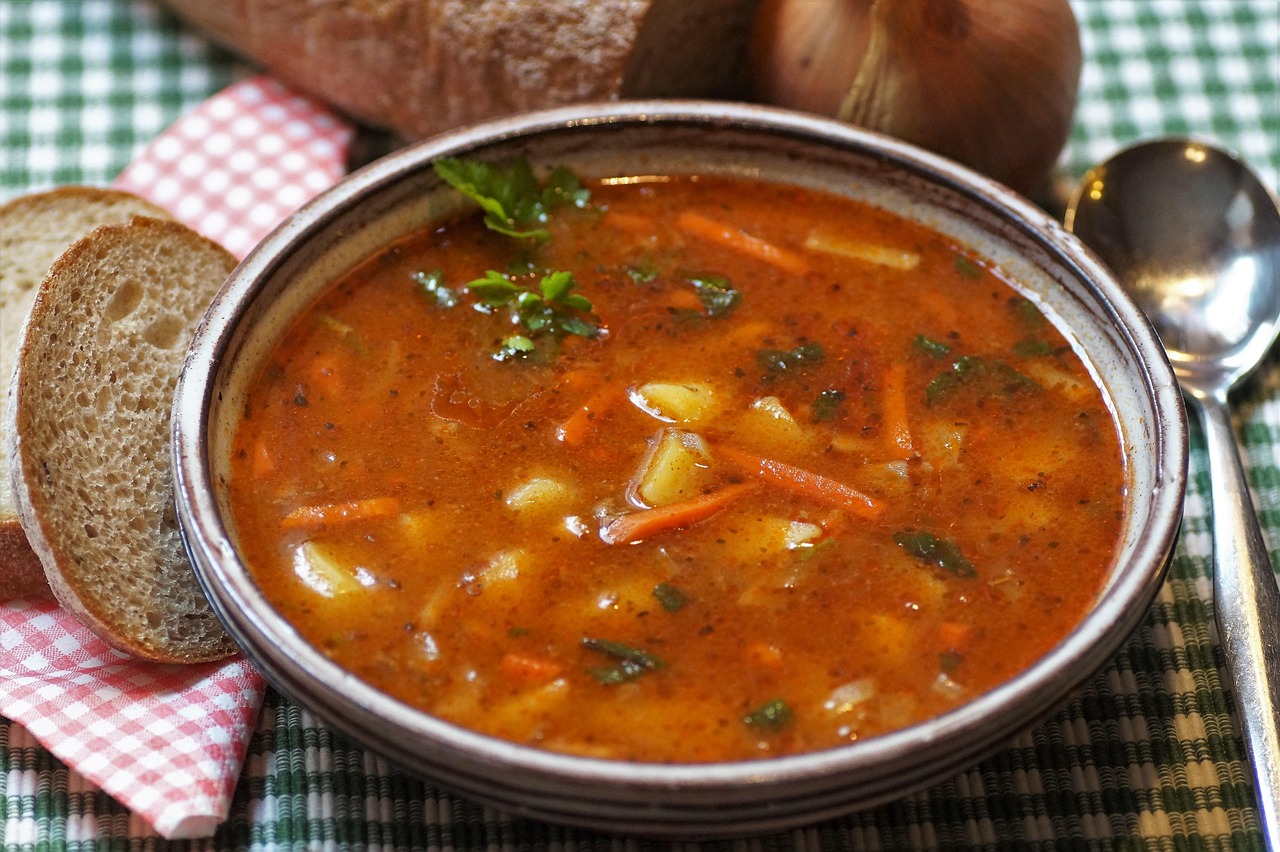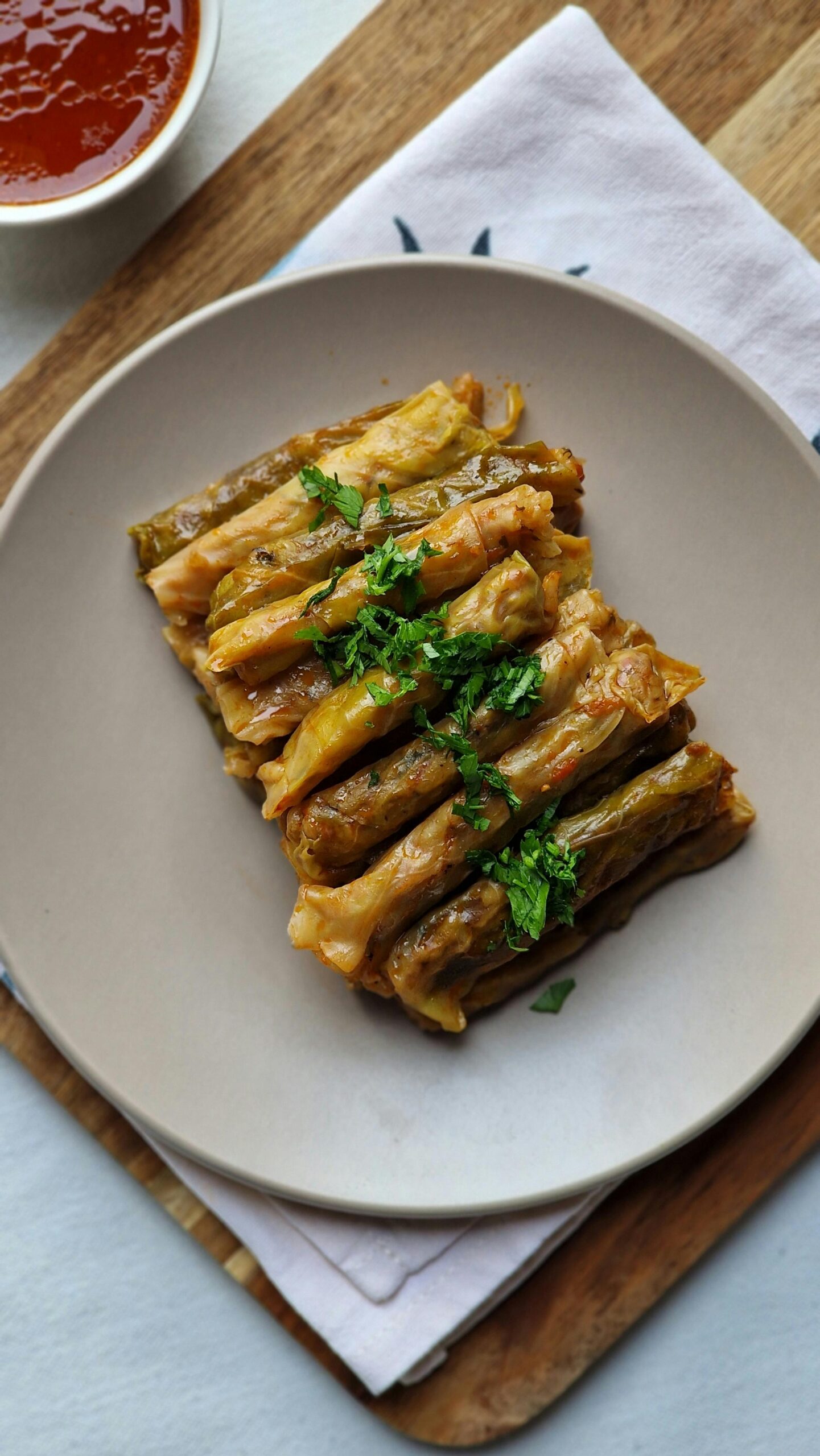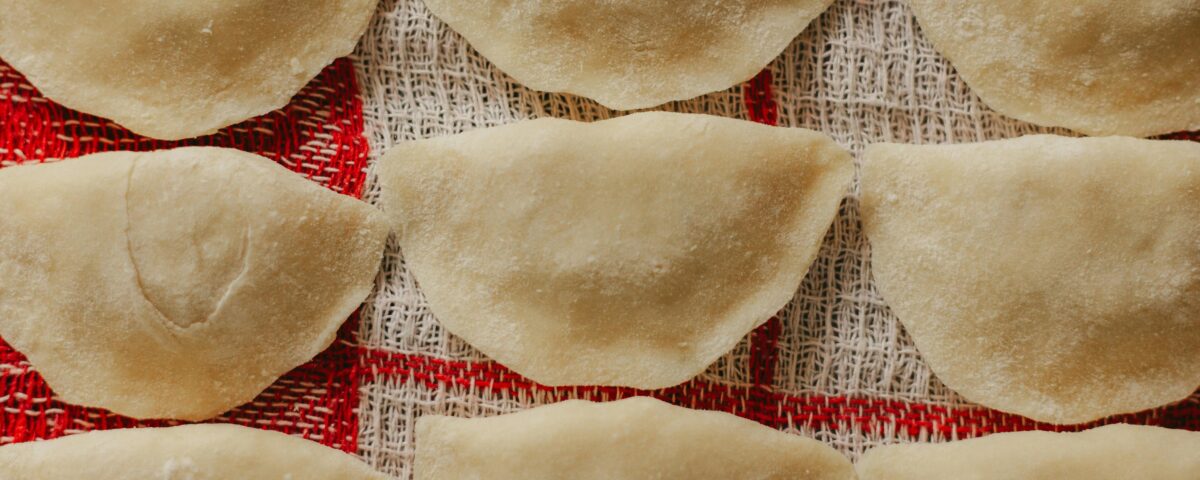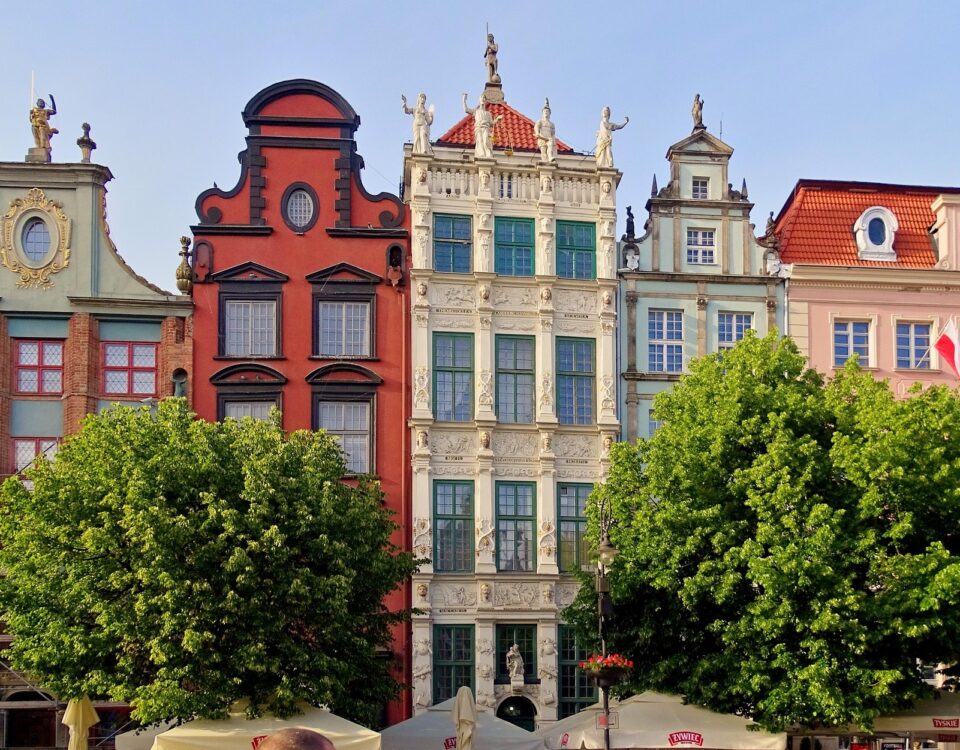
Top 10 Vegetarian Dishes in Eastern Europe| Traditional Meat-Free Food Guide
2025-10-17
Eastern European Food Travel: Discover Vodka, Mead, Kvass, and More Traditional Drinks
2025-10-21Top Dishes for Eastern European Food Travel
Eastern European food travel is a journey into culture, history, and flavor. One of its most iconic dishes is Banitsa, the flaky Bulgarian pastry filled with cheese and yogurt that defines authentic Eastern European cuisine.
Poland – The Home of Pierogi and Tradition
Poland is a paradise for those who love Eastern European cuisine. The most famous dish, Pierogi, comes in both sweet and savory forms. In Kraków, one of the best food destinations in Eastern Europe, you can taste kiełbasa (smoked sausage) and żurek (sour rye soup) at lively street markets
Pierogi – A Highlight of Eastern European Food Travel
Main Ingredients
-
Dough: wheat flour, water, salt, and sometimes egg or sour cream
-
Fillings: vary widely — mashed potatoes and cheese (pierogi ruskie), sauerkraut and mushrooms, ground meat, or sweet fruits like blueberries and cherries for dessert pierogi
-
Toppings: usually fried onions, melted butter, and sour cream
Origin & Cultural Background
Pierogi are the most iconic dish of Polish cuisine and one of the most beloved foods in Eastern Europe. Their origins date back to the 13th century, when trade routes connected Poland with Asia — likely influencing the dumpling’s concept from earlier Eastern traditions.
Legend credits Saint Hyacinth of Poland (Święty Jacek Odrowąż) with introducing pierogi to Poland after a visit to Kyiv (then part of Kievan Rus’).
Over centuries, pierogi became a national symbol, associated with holidays like Christmas Eve (Wigilia) and Easter.
Start exploring now 👉 https://www.britannica.com/topic/pierogi

Hungary – The Land of Paprika and Goulash
When talking about food travel in Eastern Europe, Hungary always stands out. Goulash, a hearty stew made with beef, potatoes, and paprika, represents the essence of Hungarian cuisine. Budapest, with its blend of historic cafés and modern restaurants, is the beating heart of Eastern European food culture
Start exploring now 👉 https://triptoeast.com/traditional-eastern-european-street-food/
Goulash – Hungary’s National Dish of Paprika and Tradition
Main Ingredients
-
Beef (or pork/lamb)
-
Onions, garlic, paprika, and caraway seeds
-
Sometimes tomatoes, potatoes, carrots, or other root vegetables
-
Cooked slowly into a thick stew or soup
-
Served with bread or egg noodles (nokedli)
Origin & Cultural Background
Goulash (Gulyás) originated among Hungarian herdsmen (gulyás) in the Great Hungarian Plain (Puszta). It began as a simple meat-and-onion stew cooked in iron kettles over open fires.
The introduction of paprika in the 16th century transformed the dish into the red, spicy version known today.
By the 19th century, during the Austro-Hungarian Empire, goulash became a symbol of Hungarian identity and independence.
Today, it’s a staple across Central and Eastern Europe — with different interpretations in Slovakia, Czech Republic, and Austria.
Start exploring now 👉https://www.britannica.com/topic/goulash

Czech Republic – Soups, Dumplings, and Beer Culture
The Czech Republic combines German, Austrian, and Slavic influences in its Eastern European cuisine. Prague, a top food destination, is known for dishes like svíčková (beef in creamy sauce) and bramborová polévka (potato soup). The country’s famous beer culture makes it a favorite among culinary travelers
Svíčková – Czech Republic’s Creamy Beef Dish
Main Ingredients
-
Beef sirloin (svíčková) marinated in root vegetables (carrots, celery, parsley root)
-
Onions, bay leaves, peppercorns, allspice
-
Sauce made with heavy cream and flour
-
Served with bread dumplings (houskové knedlíky), cranberry sauce, and lemon
Origin & Cultural Background
Svíčková na smetaně is one of the most beloved dishes in Czech cuisine, symbolizing comfort, hospitality, and tradition.
The dish originated in Bohemia during the 18th century, influenced by Austro-Hungarian culinary practices. It was initially served at noble tables before becoming a family favorite.
The beef is marinated and slow-cooked with aromatic vegetables, then blended into a smooth creamy sauce — a hallmark of Central European cooking.

Romania – Between Mountains and the Sea
Romanian food balances Balkan and Mediterranean influences. Signature dishes like sarmale (cabbage rolls) and mămăligă (cornmeal porridge) showcase the diversity of Eastern European cuisine. Bucharest, with its traditional taverns and food markets, is a hidden gem for food travel in Eastern Europe
Sarmale – Romania’s Beloved Cabbage Rolls
Main Ingredients
-
Fermented cabbage leaves or vine leaves
-
Filling: minced pork or a mix of pork and beef, rice, onions, herbs (dill, thyme, parsley), salt and pepper
-
Cooked slowly with tomato sauce, sometimes with smoked bacon or pork fat
-
Served with mămăligă (Romanian polenta) and sour cream
Origin & Cultural Background
Sarmale is one of the most traditional dishes in Romanian cuisine, with roots in Ottoman and Balkan culinary traditions.
The word derives from the Turkish “sarmak,” meaning “to wrap.” Over time, Romanians adapted the dish by using pickled cabbage leaves, a local preservation method for harsh winters.
Sarmale is typically served during Christmas, Easter, and weddings, symbolizing warmth, hospitality, and family unity.

Żurek – Poland’s Sour Rye Soup
Main Ingredients
-
Sour rye starter (fermented rye flour and water)
-
Smoked sausage (kiełbasa), bacon or ham
-
Boiled eggs, horseradish, garlic, and marjoram
-
Often served in a bread bowl made of dense Polish rye bread
Origin & Cultural Background
Żurek is one of the oldest Polish traditional soups, dating back to medieval times. It originated from the practice of fermenting grains, a common preservation method in cold climates. The soup’s distinct sour flavor comes from the natural fermentation of rye flour.
Traditionally, Żurek is served during Easter, symbolizing rebirth and the end of Lent. It is deeply tied to Catholic fasting traditions in Poland.
Mămăligă – Romania’s Golden Cornmeal Dish
Main Ingredients
-
Cornmeal (polenta)
-
Water, salt, butter, and sometimes milk or cheese
-
Often topped with sour cream, cheese (brânză), or fried eggs
Origin & Cultural Background
Mămăligă is Romania’s staple comfort food, traditionally eaten by farmers and shepherds. It has roots in ancient Roman and Dacian cuisine, originally made with millet before corn arrived in Europe from the Americas in the 16th century.
Over time, it became a symbol of Romanian identity, representing rural simplicity and connection to the land. It’s often paired with sarmale (cabbage rolls) and meat stews.
Banitsa – A Highlight of Eastern European Food Travel
Main Ingredients
-
Phyllo dough (thin pastry sheets)
-
Eggs and Bulgarian white cheese (sirene)
-
Yogurt, baking soda, and melted butter or sunflower oil
-
Optional fillings: spinach, pumpkin, leek, cabbage, or apples
Origin & Cultural Background
Banitsa is one of the most iconic foods in Bulgarian cuisine, often eaten for breakfast or during holidays. Its name comes from the Slavic verb “banja,” meaning “to fold or wrap.”
The dish dates back several centuries and symbolizes good luck, family, and prosperity. During New Year’s Eve (Surva), Bulgarians bake coins or handwritten fortunes inside the Banitsa — a beloved folk custom.
Regional versions exist across the Balkans, but the Bulgarian Banitsa is distinct for its use of sirene cheese and yogurt, giving it a tangy, rich flavor
Borscht – Ukraine’s Legendary Beet Soup
Main Ingredients
-
Beets (main ingredient)
-
Cabbage, carrots, potatoes, onions, and garlic
-
Beef or pork broth (sometimes vegetarian)
-
Tomato paste or vinegar for acidity
-
Sour cream and dill for serving
Origin & Cultural Background
Borscht is a cornerstone of Ukrainian cuisine, famous for its vibrant red color and complex, sweet-sour flavor.
The dish originated in Ukraine and spread throughout Eastern Europe and Russia, becoming a regional staple with countless variations.
Historically, it began as a simple soup made from wild hogweed leaves, later replaced by beets in the 16th century.
Today, Ukrainian borscht is more than food — it’s a symbol of cultural identity and resilience. It’s enjoyed hot or cold, depending on the season, and every family has its own recipe passed down through generations.
UNESCO / Heritage Status
✅ In 2022, “Culture of Ukrainian Borscht Cooking” was officially inscribed on UNESCO’s Intangible Cultural Heritage in Need of Urgent Safeguarding, recognizing its deep cultural significance and the need to protect it during wartime.
Balkan Moussaka – Layers of Potatoes, Meat, and Tradition
Main Ingredients
-
Ground pork or beef
-
Potatoes (thinly sliced) — unlike the Greek version, which uses eggplant
-
Onions, garlic, salt, and black pepper
-
Eggs, milk, and yogurt for the topping
-
Sometimes includes paprika and parsley
Origin & Cultural Background
Moussaka is known across the Balkans, but each country has its own version. While the Greek variant uses eggplant, the Bulgarian, Serbian, and Macedonian versions typically rely on potatoes, giving the dish a more rustic, hearty flavor.
The dish’s origins trace back to the Ottoman Empire, where layers of vegetables and minced meat were a culinary hallmark. Over time, regional adaptations created distinct variations across Eastern Europe.
In Bulgaria, Moussaka is often served with cold yogurt or tarator (yogurt-cucumber soup) and is considered a comfort food representing home and hospitality.
Pickled Vegetables – The Art of Fermentation in Eastern Europe
Main Ingredients
-
Cucumbers, cabbage, carrots, beets, garlic, peppers
-
Salt brine (water and sea salt)
-
Dill, bay leaves, black peppercorns, and mustard seeds
Origin & Cultural Background
Fermentation is one of the most ancient and widespread preservation techniques in Eastern Europe. Long winters and limited access to fresh produce made pickling vegetables essential for survival and nutrition.
Each region has its specialty:
-
Poland → Ogórki kiszone (pickled cucumbers)
-
Russia → Kvashenaya kapusta (sauerkraut)
-
Ukraine → Pickled tomatoes and garlic
-
Bulgaria → Turshiya (mixed vegetable pickles)
Fermented foods are not only rich in flavor but also in probiotics, improving gut health and immunity. Pickling traditions are often passed down within families, representing community, preservation, and resourcefulness.





